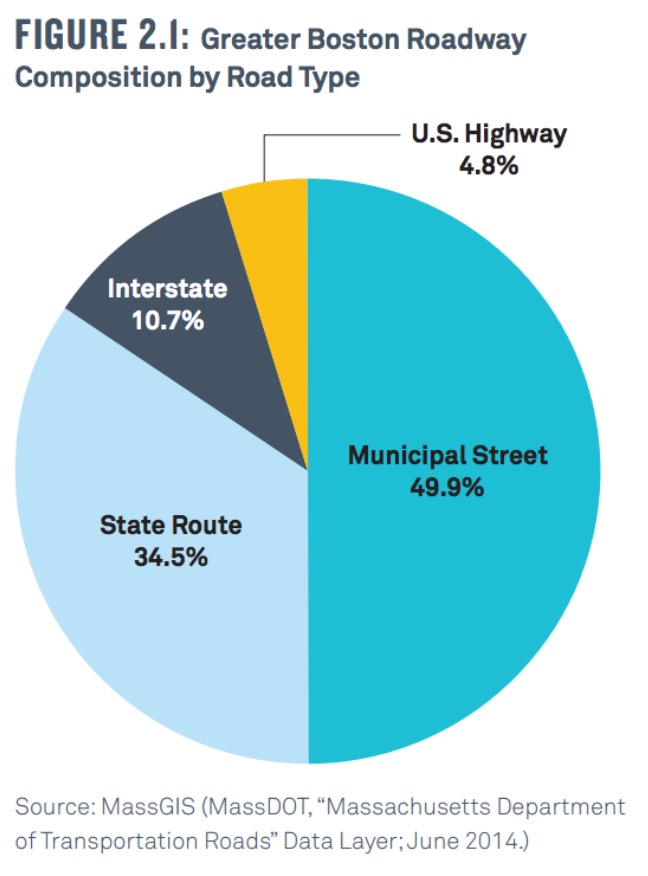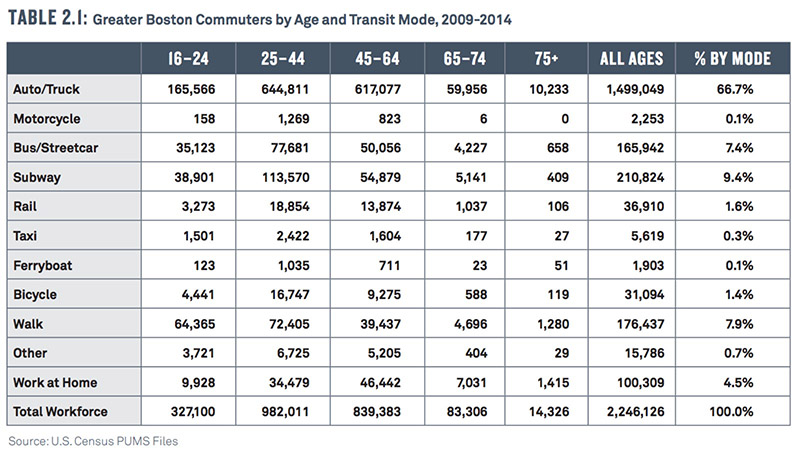A BETTER CITY
Executive Summary
 Since the 1990s,Greater Boston’s population and economy have been rebounding at a rapid pace, but such formidable growth places heavy burdens on the region’s infrastructure. The region’s population alone has jumped more than 13 percent since the 1990 Census,requiring significant improvements in the built environment. In the past, the region has faced such challenges with major infrastructure investments, from filling in the Charles River marshes to form the Back Bay to building Route 128,the nation’s first circumferential limited-access highway.
Since the 1990s,Greater Boston’s population and economy have been rebounding at a rapid pace, but such formidable growth places heavy burdens on the region’s infrastructure. The region’s population alone has jumped more than 13 percent since the 1990 Census,requiring significant improvements in the built environment. In the past, the region has faced such challenges with major infrastructure investments, from filling in the Charles River marshes to form the Back Bay to building Route 128,the nation’s first circumferential limited-access highway.
Today, we face equally daunting infrastructure challenges. In addition to planning for population and business growth—requiring additions to our transportation system, energy grid, water, sewer, and recycling capacity, and conservation land— we must prepare for the extreme effects of climate change. Not only will the area experience increasingly severe weather, but climate scientists predict that Boston will be among the U.S. cities hardest hit by rising sea-levels and storm surge.
The purpose of this first report, modeled after the Dukakis Center’s annual Greater Boston Housing Report Card, is to take the measure of current infrastructure throughout the 147 communities in Suffolk, Essex, Middlesex, Norfolk, and Plymouth Counties, and to project the requirements for augmenting the built environment to meet the region’s needs in 2030. Our ultimate aim is to assist in appropriate planning for the anticipated growth of the region.
Between 2010 and 2030, we project that the population in the five counties of Greater Boston will have grown by nearly 430,000, or 10.5 percent. Where will they live? How will they get to and from work, school, and other essential destinations? Will their communities be outfitted with appropriate levels and types of transportation, energy, water and sewage capacity, recycling and waste facilities, and open and conservation land to suit their environmental and economic needs, ensuring a growing and prosperous economy? Through careful longitudinal tracking of multiple systems and demographic shifts across many jurisdictions, we hope to provide resources essential to the sort of state-of-the-art performance-based planning that will be imperative in the years ahead. Based on our projections, the conclusion is pretty straightforward. As a region we must find ways to expand our infrastructure, enhance the efficiency with which we use it, and find ways to conserve energy, water, and open space in order to accommodate the population growth and expanded economic output we project through 2030. The complexity lies in determining which course to take and ultimately how to pay for it.
Methodology and Resources
With this initial report, a template for future studies, we have identified dozens of data sets that track demand and performance in four principal types of infrastructure: transportation; energy; water and sanitation; and environment, open space, and resilience. A large number of public sector agencies and private sector companies provided data to make this project possible. For our projections we relied heavily on population and labor force forecasting through 2030 by the Metropolitan Area Planning Council (MAPC). We have harvested data from innumerable siloed sources to prepare one report for easier assimilation by policymakers, business leaders, and citizens. Using the MAPC projections, we have been able to develop estimates for household use and business consumption of infrastructure resources so that we can estimate how much and what kinds of service delivery will likely be needed to accommodate a growing and demographically varied population while advancing a strong economy. In the future, these numbers will undoubtedly shift as new and more recent data become available and, particularly in the energy and waste sectors, systems achieve efficiencies. For now, however, we are convinced that the figures included in this inaugural report represent a strong baseline for current use and anticipated future demand.
Our 2030 projections are based on several behavioral assumptions, which fall under the rubric of “business as usual.” That is, we assume no change in age-specific labor force participation, no change in transportation modes in use today, and no efficiency or conservation improvements in energy and water consumption. In future reports, we will work from this baseline to provide counterfactuals —“what-ifs”—projecting scenarios that could result from behavioral change. Our current modeling assumptions are as follows:
- The Greater Boston region will enjoy economic growth more or less in line with the 1.2 percent annual increase in productivity the U.S. enjoyed between 2006 and 2015, and small annual increases in the size of the labor force as the number of younger workers grows somewhat faster than the number of retiring Baby Boomers.
- The number of commuters will increase with the size of the labor force and, in this baseline projection, will continue to use the same age-specific and region-specific transit modes they use today
- The use of energy, water, and sewage per household and per business enterprise will remain the same as today
- Demand for air travel and seaport cargo will grow at the same annual rate as they have over the past decade.
- Sea-level rise and storm surge will match the best forecasts of regional climatologists.
Current Infrastructure Deficits
Even today, before we experience additional population growth and economic expansion, much of Greater Boston’s infrastructure is inadequate, deteriorating, and out of date.
- According to MassDOT, 37 percent of state-owned roads are currently in “poor” or only “fair” condition. At the present rate of maintenance, 79 percent of the state’s roadways could be in poor to fair condition by 2025. In addition, Greater Boston’s 2,115 bridges could be improved. Eleven percent are either closed to traffic or functionally deficient, and nearly 20 percent are restricted from use by heavy commercial vehicles.
- Highway congestion has become so bad that typical AM and PM commuting speeds within Greater Boston on the Mass Pike, I-93, Routes 3 and 24, and I-495 are below 25 mph and on many segments below 20 mph.
- MBTA vehicles are in desperate need of maintenance and modernization. More than a third of operating Red Line cars were acquired more than 40 years ago, and 44 percent of Green Line trolley rolling stock dates back to 1989. To reach a “state of good repair,” the T calculates the system needs over $7 billion in improvements. The transit system also faces a number of capacity constraints.
- While Logan Airport has been able to keep up with demand for passenger and freight service through the use of larger aircraft and higher load factors, the Conley container port terminal has neither the water depth nor crane capacity to handle any of the new larger container vessels.
- While Massachusetts and Boston have made great strides in reducing Greenhouse Gas Emissions, meeting national goals by 2030 will require steady improvement in energy efficiency and conservation.
- Greater Boston is blessed with nearly 900 miles of hiking trails, but the Department of Conservation and Recreation reports that less than half are considered in good repair.
- While strides have been made in recycling, as of 2010 less than a third of all waste is being recycled.
- Sea-level rise and storm surge are inevitable, but much of the built environment near the Boston waterfront is not currently resilient.
Download full version (PDF): State of the Built Environment
About A Better City
www.abettercity.org
A Better City is a diverse group of business leaders united around a common goal — to enhance Boston and the region’s economic health, competitiveness, vibrancy, sustainability and quality of life. With 130 member companies across multiple sectors, A Better City operates between the private and public sectors using technical expertise and research capabilities to shape key policies, projects and initiatives. By amplifying the voice of the business community through collaboration and consensus across a broad range of stakeholders, A Better City develops solutions and influences policy in three critical areas central to the Boston region’s economic competitiveness and growth — transportation and infrastructure, land use and development, and environment and energy.
Tags: A Better City, Boston, MA, Massachusetts







 RSS Feed
RSS Feed